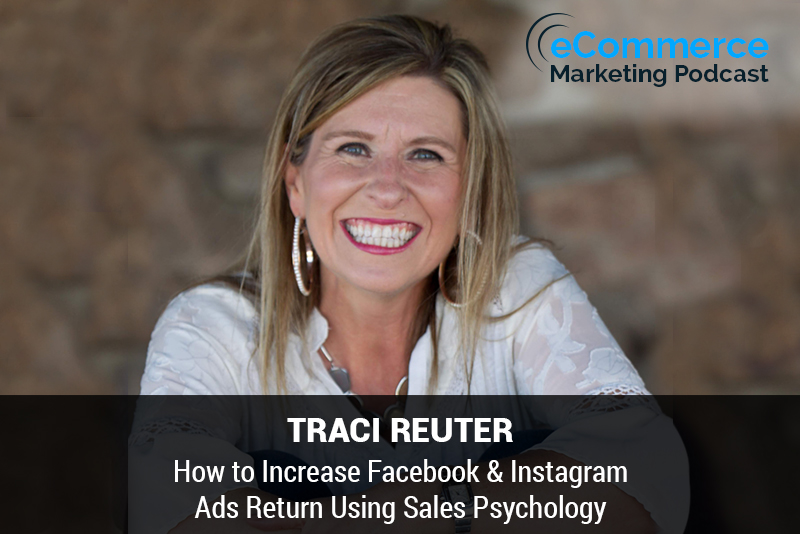
The eCommerce Marketing Podcast walks you through everything that goes into ecommerce marketing — from inbound marketing to paid advertising to conversions. Learn the strategies top marketing experts use to grow their businesses.
Marketing Strategies Revealed in this Episode:
- Basic elements of sales psychology
- Understanding the customers journey
- Using sale psychology and customers journey to drive up sales from Facebook and Instagram Ads
- How to target specific customers on Instagram and Facebook
- How sales psychology and the customer journey differs across different social networks

Episode Title: How to Increase Facebook & Instagram Ads Return Using Sales Psychology – with Traci Reuter
Guest: Traci Reuter, Founder/CEO of Divine Social
In this episode of the eCommerce Marketing Podcast, host Arlen Robinson interviews Traci Reuter, the founder and CEO of Divine Social. With 25 years of experience in sales and marketing, Traci shares her insights on using sales psychology and the customer journey to enhance the effectiveness of Facebook and Instagram ads. She discusses her journey from a corporate career at AT&T to starting her own successful social media advertising agency. Traci highlights the importance of understanding the customer journey, building relationships with potential customers, and the significance of blending branding with direct response advertising.
Key Takeaways:
- Traci’s Background and Journey to Founding Divine Social (00:01:00):
- Transitioned from a corporate career at AT&T to digital marketing due to personal circumstances.
- Started Divine Social five years ago, focusing on social media advertising.
- The Importance of Sales Psychology and the Customer Journey (00:05:00):
- Sales psychology works across all business types.
- Understanding the customer journey from awareness to brand advocacy is crucial.
- Three Pillars of Successful Social Ads (00:10:00):
- Conversions, audience building, and engagement are essential.
- Focusing only on conversions is shortsighted; branding is equally important.
- Case Study: Adidas’ Shift in Strategy (00:15:00):
- Adidas realized the need to shift budget from 23% branding to 60% branding.
- Branding drives long-term customer loyalty and sales.
- Building Relationships with Potential Customers (00:20:00):
- Providing value before asking for anything in return is key.
- Videos and educational content help engage cold audiences.
- Facebook vs. Instagram for Sales (00:25:00):
- Despite Instagram’s popularity, Facebook still drives more sales.
- Instagram is effective for branding and audience growth.
- Adapting to Changes in Social Media Platforms (00:30:00):
- The importance of brands and building relationships with customers.
- Providing value and leveraging social platforms for engagement.
Guest Information:
- Name: Traci Reuter
- Position: Founder/CEO of Divine Social
- Website: Divine Social
- Email: [email protected]











